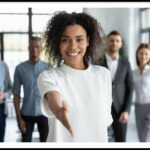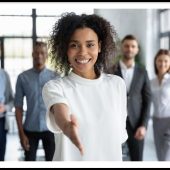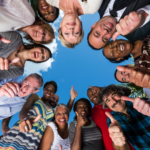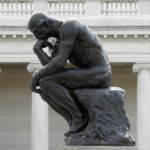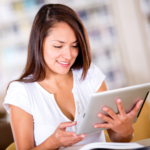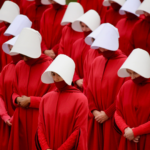By Rina Goldenberg Lynch
We have been looking back to identify and reflect upon the trends and changes that we have observed over the last ten years, as we approach our Conference and Awards event on 8 February. These changes have informed the panel topics for our conference and have also shaped some predictions for the next decade in Equity, Diversity and Inclusion (EDI) that we will share on the day. In one of our panels, we will be examining what it takes to take Diversity beyond gender equality and why this is so important.
The way it was
Gender balance was the most prominent Diversity challenge that everyone focused on 10 or more years ago, because women are the biggest underrepresented group in the workplace. Over the years, companies introduced targets on hiring and promoting women, as well as specific training and development programmes for women – and a fear grew among working men that, in order to hit these targets, only women would be hired and promoted.
Terms like ‘glass ceiling’, coined by a woman in 1978, became fashionable and well-used, illustrating the need for women to break through the long-established constraints on their advancement in the workplace. Organisations made attempts to bring women back to the workforce after becoming mothers, but usually failed to provide a sufficiently flexible and family-friendly working environment to make this workable for the mothers concerned. Companies leveraged advertising campaigns making us aware of society’s fallacies around gender stereotypes – Always’ like a girl, Pantene’s sorry not sorry and Boss vs Bossy being some of the more prominent ones. There was a lot of talk and activity, and also very little real change.
Why this didn’t work
The gender balance objective was to put more women into the mix – and it’s true that more women were being ‘parachuted’ into boards and more senior positions – but they had to adjust to the prevailing male culture in order to succeed. Even when women were getting to senior positions, they weren’t being taken seriously, listened to or heard. It’s important to remember that the glass ceiling was never about women not being good enough to break through, but about the barriers to advancement being cultural, not personal.
Women who succeeded at work by acting more like men were disliked, as that’s not behaviour expected of – or acceptable from – women. Those who didn’t succeed were told they needed be more confident, more outspoken, and be better at networking, i.e., behave more like ‘men’ do in order to succeed. The culture around women at work wasn’t changing, and women became disenchanted with, on the one hand, being cheered on and encouraged, on the other hand, not fitting in, being appreciated or allowed to make a real difference.
Other issues include the emerging concept of the ‘glass cliff’, meaning that women are more likely to be promoted in times of crisis, or to be given less support when put into a senior role, so that the risk of failure is far higher for them than it was for the men who might have previously held the equivalent position. The gender pay gap is well-known as an apparently insurmountable challenge, and board quotas remain a controversial topic. In the summer of 2022, The Guardian reported that, ‘The EU has agreed that companies will face mandatory quotas to ensure women have at least 40% of seats on corporate boards. After 10 years of stalemate over the proposals, EU lawmakers hailed a “landmark” deal for gender equality.’ It remains to be seen what impact this will have on women’s experience in these senior roles.
Beyond Gender
Two major things contributed to the end of EDI’s primary focus on gender balance: There was already a growing backlash to and fatigue around the prevailing messaging. Then the tragic death of George Floyd brought global focus to the racial inequalities that are still a fundamental part of US culture, and the message resonated everywhere: Black Lives Matter.
Companies started talking about addressing the workplace challenges faced by other groups, not just women, and focus shifted away from gender to ethnicity, LGBTQIA+ and more general Inclusion. There is a much greater understanding of different types of groups in society, including neurodiversity, age, etc. and organisations now understand that in order to benefit from diverse perspectives, Inclusion is essential.
They are focusing on changing culture by exposing bias in the workplace that holds back not just women but others who don’t fit a specific type destined for success in a given organisation. Books like Rebel Ideas and The Promises of Giants began to hail the outsider perspective and explain how to leverage it for the good of the organisation (and, indeed, society). Slowly, the perspectives of those who don’t fit a specific type became interesting and it became important to learn how to behave in order to benefit from them. Learning how to behave in this more inclusive way is showing people that instead of feeling threatened by the diversity of another, we can all benefit from it. This mindset is benefitting women as well as the other underrepresented groups now being taken into account and supported through greater Inclusion.
This is the inclusive mindset that will make a difference to Diversity.
What now?
Although the focus remains steadfastly on Inclusion, organisations are beginning to refocus on gender, as the numbers of women at work have never recovered from the mass drop off during Covid. In addition, organisations have realised that taking their eye off the ball – in this case the ball being gender balance – presents the threat of that ball falling and rolling off. Perhaps people gave up on gender balance too soon.
That said, the way gender is being addressed now is more meaningful, as part of the broader drive for greater Equity, Diversity and Inclusion. The changes that are being put in place are changing working cultures to make work a better place for everyone, not just women. In many cases, progress on these changes is being measured around the progress of women in companies, as there is a realisation that if companies succeed in attracting and retaining more women, they are also succeeding in changing the culture in a way that will benefit other minority groups.
By adopting a genuinely inclusive mindset that addresses workplace bias, promotes inclusive behaviour and looks to the benefits brought by greater Diversity of all kinds, real progress can be made.
Suggested Reading

A Look At Gender Equity

What Gender Equality Can Do for Men

